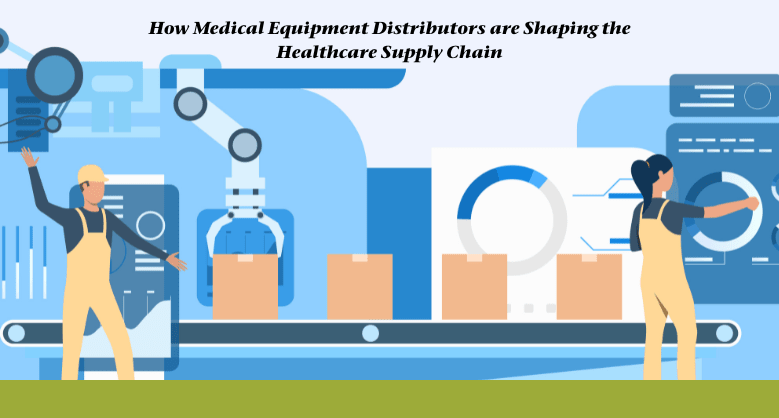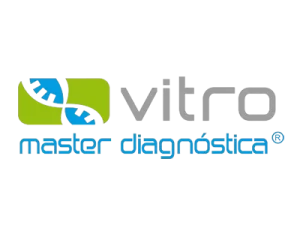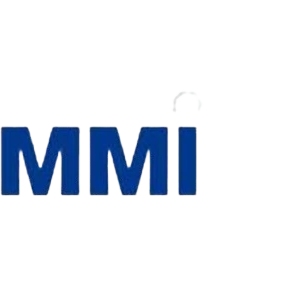DSS: Redefining Biotechnology & Life Science in India
- About Us
- Products & Services
PRODUCTS & SERVICES
-
Kits Reagents & Consumables
- Cytogenetics
- Dyes
- Fluorescence In Situ Hybridization (FISH)
- High-Performance Liquid Chromatography (HPLC)
- Histology
- Immuno Histo Chemistry (IHC)
- IVF Consumables
- Molecular Pathology & Diagnostics
- Multiplex Ligation-Dependent Probe Amplification (MLPA)
- Nucleic Acid Extraction
- PharmDx
- Real Time PCR
- Special Stains
- Instruments
- Software
- Accessories
- Advanced Material
-
Kits Reagents & Consumables
- Applications & Specialities
All Applications & Specialities
- Brands
- Contact Us
-

-
 0
0
- ☰
- About Us
- Products & Services
-
Kits Reagents & Consumables
- Cytogenetics
- Dyes
- Fluorescence In Situ Hybridization (FISH)
- High-Performance Liquid Chromatography (HPLC)
- Histology
- Immuno Histo Chemistry (IHC)
- IVF Consumables
- Molecular Pathology & Diagnostics
- Multiplex Ligation-Dependent Probe Amplification (MLPA)
- Nucleic Acid Extraction
- PharmDx
- Real Time PCR
- Special Stains
- Instruments
- Software
- Accessories
- Advanced Material
-
Kits Reagents & Consumables
- Applications & Specialities
- Brands
- Brand - Life Sciences
- 3i
- ABBERIOR INSTRUMENTS
- Abbott Molecular
- ADS Biotec
- APPLIED SPECTRAL IMAGING
- BioAir Tecnilabo
- DAKO (AGILENT)
- Eden Tech
- Elveflow
- ENTROGEN
- EUROCLONE
- EVIDENT
- Genea
- Hamamatsu Photonics
- Invivoscribe
- MASTER DIAGNOSTICA
- MBF BIOSCIENCE
- Medical Tek Co. Ltd
- MILESTONE MED SRL
- Molecular Machines & Industries
- MRC HOLLAND
- NeoDx
- Onward Assist
- Profound
- SCIENTIFICA
- SpaceGen
- Seqlo
- µCyte
- Brand - Industrial
- Brand - Life Sciences
- News & Events
- Career
- Contact Us
- Testimonial
- Blogs
- R&D
- CSR
- Press Release

How Medical Equipment Distributors are Shaping the Healthcare Supply Chain
BY DSS Imagetech Pvt Ltd 27th June 2025
Medical equipment distributors play a crucial role in our healthcare system, serving as the backbone of an increasingly complex supply chain. In fact, distributors sell over 90% of all prescription drugs, making them essential intermediaries between manufacturers and healthcare providers. When we look at the broader picture, the United States imported over $75 billion in medical devices and supplies in 2024 alone, highlighting the massive scale of this industry.
The global nature of healthcare supplies creates both opportunities and vulnerabilities for our medical system. Notably, 39.9% of pharmaceutical and medical equipment imports came from Europe, while 20% originated in Asia. This international dependency extends across various product categories, with approximately 70% of pharmaceuticals, 65% of medical devices, and a staggering 80% of Personal Protective Equipment (PPE) being sourced globally. As distributors work to supply everything from advanced Endoscopy Systems and Imaging Systems to specialised Laboratory Instruments and IVF Equipment, they must navigate a challenging landscape of supply chain disruptions. Tragically, these issues have resulted in considerable deficits, with the American Society of Health-System Pharmacists reporting the largest number of medication shortages in 2023 since monitoring started in 2001.
Medical Equipment Distributors: Their Role in the Healthcare Ecosystem
At the heart of the healthcare supply chain are medical equipment distributors who form the vital link between manufacturers and healthcare providers, ensuring life-saving devices reach patients when needed.
How distributors connect manufacturers and providers
Medical equipment distributors play critical roles in the healthcare ecosystem. They purchase products directly from manufacturers and then distribute them to hospitals, clinics, physician practices, and other healthcare facilities. More than 1,200 pharmaceutical manufacturers rely on distributor services to connect them with sites of care.
Beyond simple logistics, these companies manage complex supply chains, ensuring that healthcare providers have timely access to the necessary tools and equipment. Such immediate accessibility has a direct influence on the quality of medical treatment and results. Additionally, distributors build and maintain relationships with healthcare providers, showcasing product benefits and providing ongoing support.
Furthermore, they handle the often complex regulatory compliance requirements, ensuring all equipment meets safety standards—a critical responsibility that directly affects patient safety.
Types of medical equipment handled
Medical equipment distributors handle a broad and diversified variety of products:
- Basic Medical Supplies: From disposable things like gloves or syringes to lasting equipment like wheelchairs and hospital beds,
- Specialised Equipment: Advanced technological devices including Endoscopy Systems, Molecular Diagnostics, and Imaging Systems
- Pharmaceuticals: Managing prescription medications and vaccines within the context of the medical care supply chain.
- Biomedical Parts: Selling replacement parts and materials for equipment maintenance.
- Personal Health Materials: Providing instruments necessary for treating patients beyond typical medical settings.
For instance, large distributors like McKesson Medical-Surgical maintain inventories of more than 300,000 products, including advanced lab solutions, surgical instruments, point-of-care lab testing, and advanced wound care products.
Why their role has grown post-pandemic
The COVID-19 pandemic exposed critical vulnerabilities in medical supply chains, consequently elevating the importance of distributors. During this period, skyrocketing prices and severe shortages forced healthcare organisations to reevaluate their supply chain management strategies.
As a result, medical equipment distributors have adapted by diversifying their supplier networks to avoid bottlenecks. Many now partner with multiple suppliers rather than relying on a single source. Moreover, they’ve begun stockpiling essential supplies and producing more equipment locally to reduce shipping delays.
The shift toward telemedicine has also expanded distributor responsibilities, as they now supply more home medical tools like blood pressure monitors and pulse oximeters that patients need for remote care. Throughout these changes, distributors continue delivering 10 million lifesaving medicines and medical products nationwide, making them truly the backbone of modern healthcare delivery.
Key Functions and Responsibilities of Distributors
Behind every medical device that reaches a healthcare facility lies a complex operational infrastructure managed by medical equipment distributors. Their responsibilities extend far beyond simple product delivery.
Inventory management and warehousing
The cornerstone of distribution operations is effective inventory control. Medical equipment distributors typically maintain 150 days of inventory on average, with some holding up to 400 days’ worth. This substantial investment requires sophisticated management systems that track everything from procurement to disposal.
Successful distributors implement specialised inventory protocols, including:
- First-in, first-out (FIFO) methods to prevent expired products
- Barcode or RFID tagging for real-time tracking
- Regular audits to verify inventory accuracy
- Temperature-controlled storage for sensitive items
Logistics and last-mile delivery
The final journey of medical equipment presents unique challenges. Distributors must balance rapid delivery with product integrity, especially for temperature-sensitive medications that require precise environmental controls throughout transport. Time-sensitive deliveries are particularly critical—medications often need to arrive before specific administration times, such as morning medication rounds at nursing facilities.
Regulatory compliance and quality assurance
Distributors navigate a complex regulatory landscape. Most states require licensure for prescription medical device distributors, imposing requirements for recordkeeping, storage, and quality assurance. In addition, they must follow FDA Quality System Regulations controlling device development and testing. This ensures all distributed products maintain safety standards from the manufacturer to the patient.
Support for specialised equipment like Endoscopy Systems
Beyond logistics, distributors provide critical technical support for complex medical technologies. For specialised equipment like Endoscopy Systems, distributors offer precision cleaning, decontamination services, and technical expertise. Many also maintain repair capabilities for rigid and flexible endoscopes, ensuring healthcare providers have continuous access to functioning equipment. This technical support extends to other advanced technologies, including Molecular Diagnostics, Imaging Systems, and Virtual Reality-Based Simulators.
Challenges Faced by Medical Equipment Distributors
The landscape of Biotechnology Products has become increasingly challenging for distributors in recent years, with multiple factors creating a perfect storm of operational hurdles.
Supply chain disruptions and delays
Natural disasters frequently create significant bottlenecks in medical product delivery. Hurricane Helene recently wrecked Baxter International’s North Carolina factory, a major provider of IV fluids in the United States, resulting in severe shortages and forcing several hospitals to put off crucial treatments. Similarly, when Hurricane Maria hit Puerto Rico in 2017, it disrupted power at three Baxter facilities for four months, resulting in nationwide saline shortages throughout 2018. These disruptions expose the fragility of medical supply chains when concentrated in specific geographic areas.
Tariffs and trade policy impacts
Current trade policies have created unprecedented financial pressure on medical equipment distributors. The Biden administration recently raised tariffs on Chinese-made medical items, including syringes and needles, from 25% to 50%, potentially increasing annual hospital costs by at least $160 million. In addition, taxes on battery packs, face masks, and even medical gloves have increased to 25%. One industry survey found that 82% of healthcare experts expect tariff-related import expenses to drive up hospital costs by 15% within six months.
Dependence on international suppliers
The United States has grown increasingly dependent on global supply chains, with approximately 30% of total domestic demand for medical equipment fulfilled through imports. By 2018, the U.S. trade deficit for medical equipment had doubled to 14% from 7% in 2012. This vulnerability became painfully apparent during COVID-19, when China (supplying 28% of medical imports) and the EU (18%) faced their own crises.
Shortages in critical items like PPE and IVF Equipment
During the pandemic, PPE scarcity forced healthcare facilities to implement crisis capacity strategies that weren’t commensurate with standard U.S. care levels. For IVF clinics, although major suppliers maintained a 6-12 month inventory of U.S.-manufactured supplies, they faced challenges with blood collection items sourced from China. Today, approximately 80 medical devices remain on the FDA’s official shortage list, highlighting ongoing challenges despite improved supply chains.
How Distributors Are Shaping the Future of Healthcare Supply Chains
Innovative technologies are reshaping how medical equipment distributors operate in today’s healthcare ecosystem. These advancements are not just improving efficiency—they’re fundamentally transforming patient care delivery.
Adoption of real-time tracking and analytics
Real-time locating systems (RTLS) have emerged as game-changers for medical equipment tracking. These systems identify the physical locations of equipment and personnel instantaneously through strategically placed sensors. Healthcare distributors now leverage this technology to track critical medical devices from manufacturer to bedside, ensuring timely patient treatment.
Nurses typically spend about 12% of their shifts searching for equipment, equivalent to over 200 hours of lost productivity per nurse annually, costing approximately $14 billion nationwide. By implementing real-time tracking, distributors help facilities overcome this challenge while collecting valuable data on equipment utilisation patterns.
Integration of Virtual Reality-Based Simulators for Training
Virtual reality is revolutionising medical training with distributors increasingly supporting VR-based simulation platforms. Unlike traditional training, VR simulation requires less infrastructure while providing greater accessibility. Medical trainees can now practice procedures in virtual environments remotely, at any time, without risk to actual patients.
At Stanford University’s Neurosurgical Simulation and Virtual Reality Centre, surgeons “fly” through 3D patient scans before operations, analysing brain tissue and vessels without invasive procedures. This technology helps bridge theory with practice, particularly for specialised equipment like Endoscopy Systems.
Support for Molecular Diagnostics and Imaging Systems
Forward-thinking distributors are expanding their offerings to include comprehensive molecular diagnostic solutions. Cardinal Health, for instance, collaborates with leading manufacturers to provide innovative molecular testing solutions that streamline workflows and reduce costs. Their portfolio includes automated testing systems that help achieve fast, accurate results.
Collaborations with hospitals and manufacturers
Cross-industry collaboration has become essential for supply chain optimisation. According to a 2024 roundtable by the Healthcare Distribution Alliance, data-related challenges—including availability, quality, and integration—remain significant hurdles for over two-thirds of healthcare supply chain leaders.
As a result, cloud solutions have started to gain traction, 45% of healthcare providers have already switched to cloud technology for managing their supply chains, with many more projected to do so in 24 months. These platforms enable trading partners to access the same information in real-time, collaboratively resolving issues like order discrepancies and backorders.
Conclusion
Medical equipment distributors undoubtedly serve as critical pillars of our healthcare infrastructure. Throughout this article, we’ve seen how these organisations bridge the gap between manufacturers and healthcare providers while managing complex logistics networks. Their ability to adapt during crises has proven especially valuable, as evidenced by their response during the pandemic.
Healthcare facilities now recognise distributors as strategic partners rather than mere suppliers. According to recent industry surveys, 78% of hospital administrators consider their distributor relationships “highly important” to maintaining operational continuity. This represents a significant shift from the pre-pandemic era, when only 41% viewed these relationships as strategic.
Economic pressures will certainly shape future distributor operations. Healthcare systems face mounting financial challenges, with 52% of hospitals operating on negative margins in 2023. Distributors must therefore balance cost-effectiveness with reliability, pushing many toward predictive analytics that can reduce waste by 23-30% annually.
The industry appears headed toward greater consolidation as well. Four major distributors currently control approximately 65% of the medical equipment distribution market, a figure expected to reach 75% by 2027. This consolidation may benefit healthcare providers through economies of scale, but raises questions about market competition.
Last but not least, climate considerations have emerged as another focus area. Medical distributors generate significant carbon footprints through transportation and packaging. Consequently, many have begun implementing sustainability initiatives, with industry leaders pledging 30-50% emissions reductions by 2030.
Though challenges remain, medical equipment distributors will continue evolving as indispensable healthcare partners. Their agility in responding to market changes, commitment to technological advancement, and essential position between manufacturers and providers ensure they’ll shape healthcare delivery for decades to come.
Latest Articles
World AIDS Day: Breaking the Stigma and Understanding HIV Testing
BY DSS Imagetech Pvt Ltd December 1, 2025
Worlds AIDS Day 2025 focuses on the theme “Overcoming disruption, transforming the AIDS response.” Highlighting the need for a stronger, more resilient approach to end the epidemic. This theme acknowledges...
Read MoreHow Olympus Microscopes Support Clinical Diagnostics and Pathology Labs
BY DSS Imagetech Pvt Ltd November 26, 2025
In the world of modern medicine, the clinical diagnostics laboratory is the engine room of the healthcare system. It is a high-stakes, high-pressure environment that operates largely unseen by the...
Read MoreThe Role of Genetic Testing (BRCA, Onco-panels) in Breast Cancer...
BY DSS Imagetech Pvt Ltd November 18, 2025
Breast cancer is a complex and deeply personal diagnosis that will affect many women in their lifetime. For decades, our primary approach was reactive: focusing on awareness, monthly self exams,...
Read More





























